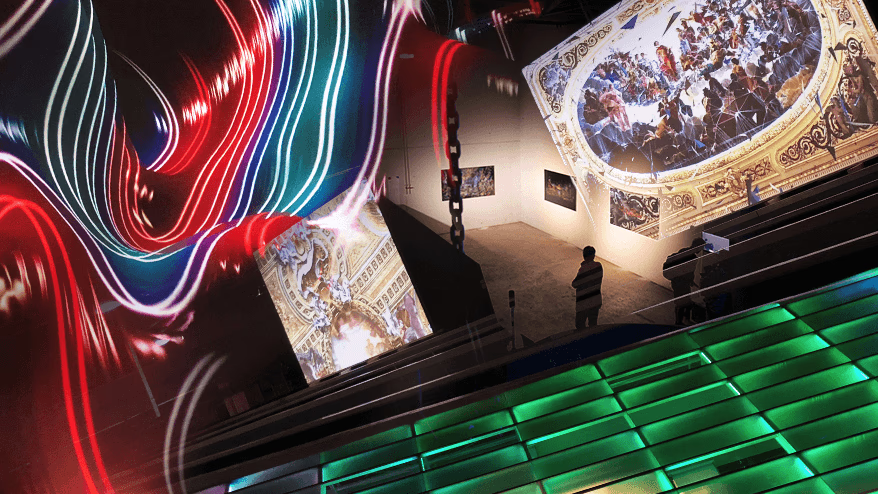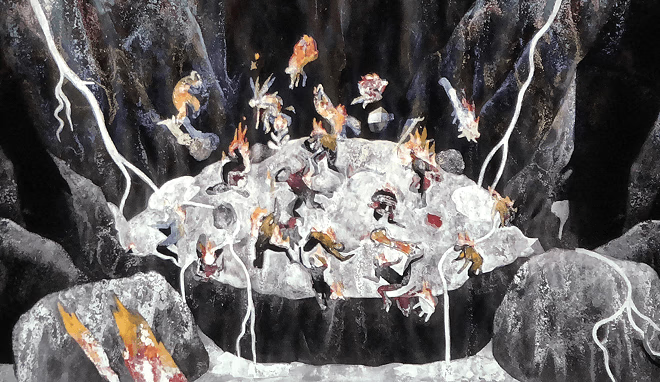My name is Onogi, a designer. I retired from my position as head of the design department in March of this year, and I have been trying new jobs and gaining new experiences to broaden my horizons as a designer. As part of that, I heard about a tour of Ars Electronica (hereafter referred to as Ars), which is held every September, and this year I participated for the first time.
ARS is a festival of art, technology, and society, where media artists from all over the world gather every year. It has a long history, having started as a music festival in 1979, and changes its theme every year. This year's theme is " ERROR ".
I'm sure you can find information about this year's works on other websites, so I would like to use this opportunity to share with you what I personally thought and felt through Ars.
The place called Linz and Ars Electronica
After about 14 hours from Japan, we arrived in Linz, a regional city in Austria. My impression was that the streets were historic, and the buildings were not tall, so the sky felt wide. Once you exit the square, you'll find a wide green space, creating a nice balance between nature and the city. When I arrived, Ars was already in session, but the whole town had a laid-back atmosphere, and I didn't expect that a global art festival was taking place there.
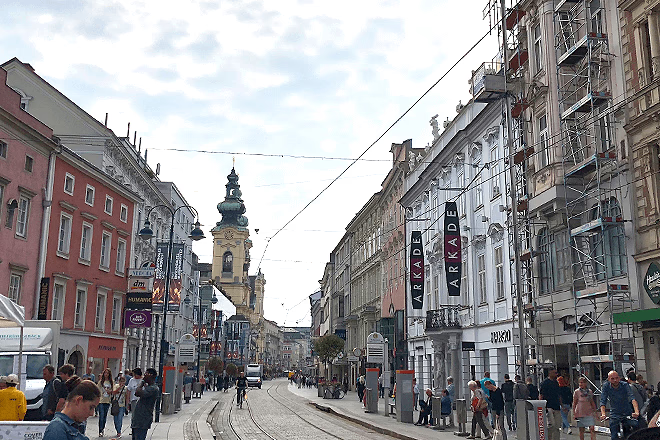
There are many historical buildings, and people seem to be strolling around without any particular purpose, giving the place a relaxed impression.
There are several venues for Ars , with the main venue being "Post City," a former post office collection and delivery center, the "OK Center" where the award-winning works are displayed, the "Ars Electronica Center," which operates a lab open to the public, and other venues including exhibition spaces and museums that use churches. You can get a general idea of the geography in a day, and if you have a pass during Ars, you can ride the tram (streetcar) as much as you want, so you can easily go to the exhibition you want to see whenever you feel like it.
On the first day after arriving, we entered Post City, the largest venue, and in a good way, we didn't feel the sense of partition that is typical of events, where you think, "Yes! From here on, it's another world." Perhaps because the exhibits were dotted along the main street, the seamless atmosphere, where the concentration of art and technology seemed to change in gradation from the city to the depths of Post City, left a good impression.
The amount and density of information in Tokyo is not bad, but after experiencing Linz's sense of balance, I was reminded just how noisy Tokyo is and how closed off a place it is for its residents.
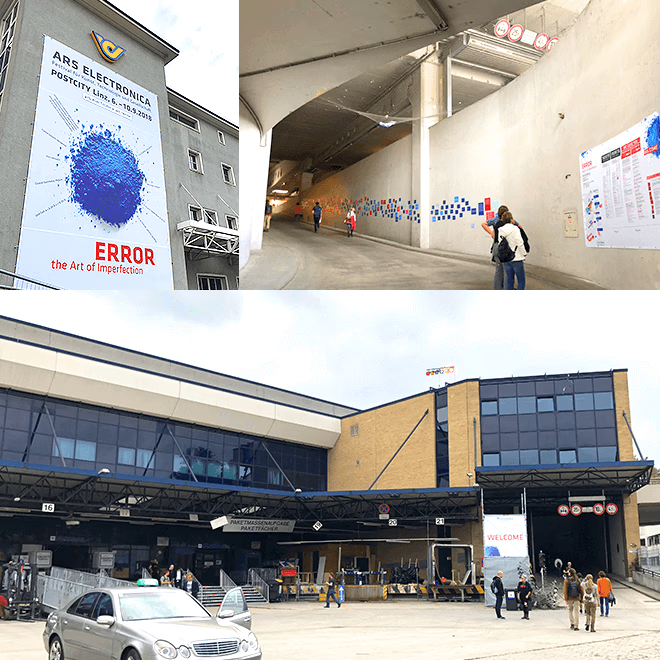
Post City Entrance
Reconsidering Media Art through First-Hand Experience
Post City is so large that you can't walk around it in a day, it's like a maze. Media art is displayed everywhere. I had always thought of media art as something that uses digital technology to communicate art using movement and light, but it seems that they have a broader understanding of art, from completely analogue works, to biotechnology projects, to intangible mechanisms.

Inside the vast Post City.
I'm pretty much a beginner when it comes to art. There's always a reason for a design, so I like designs that have logic. I used to avoid art because I thought it was hard to get into, but perhaps because I had done some preparation beforehand about the works I wanted to see, I was able to once again feel that art is deep and very interesting. Media art has a particularly strong technological aspect, so those who like logic can enjoy it as a mechanism, and it's easy to get into.
I saw many works, but the one I will probably never forget is the animation "La Chute" at the OK Center. It combines and loops about 4,000 watercolor paintings through computer processing, and conveys an indescribable sense of despair about angels and hell.
Art and design are completely different, but when it comes to "expression," there seems to be some overlap. However, because design is premised on being a "tool for people to use (view)," I have always thought that expression itself cannot be the goal. On the other hand, art is very pure and touches the wild side of humanity... that feeling is also pleasant, and I walked around the venue thinking, "Maybe I should enjoy my job as a designer more?"
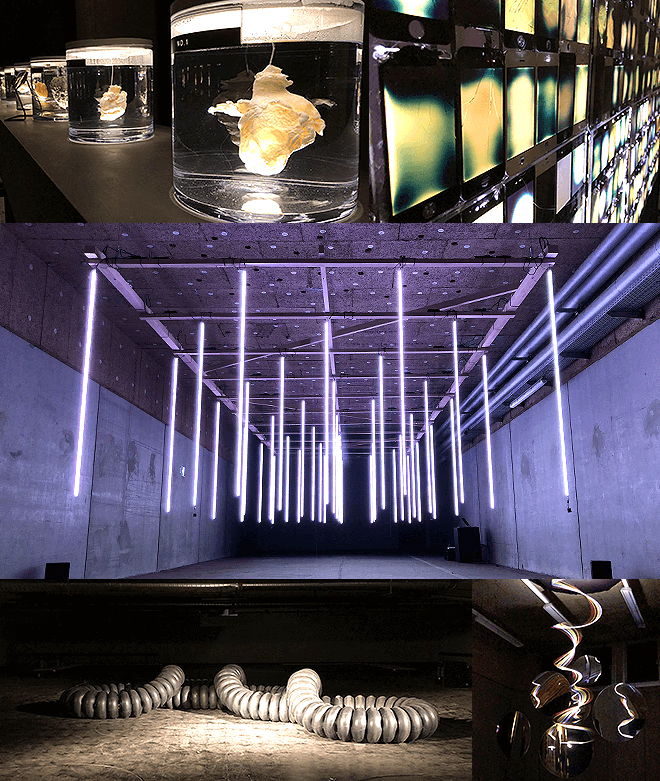
From questions of human ethics to black magic, the deeper one goes underground in post-city life the more deeply one is challenged with themes.
On the first floor of Post City, there is also an experiential exhibition space and lab that families can enjoy with their children. This scene made me strongly feel that programming and fabrication will be a given for children of the future. Digital fabrication festivals and exhibitions are being held in Japan, so I once again wanted my daughter to be exposed to the range of expression that technology makes possible from an early age.

There is also a lab space that both children and adults can enjoy. ARS is unique in that it naturally provides opportunities for children to come into contact with technology.
I don't know if I can call it art, but there were some experimental projects by startups and university research institutes. As a designer, I find these easier to understand because I can see the future of these projects being implemented in society. I feel like I can see the future. For example, there was a project to "build a bridge with a 3D printer." There are issues with strength and other things, so it's still experimental, but I felt it was a symbol of the future being even further ahead than we can imagine.
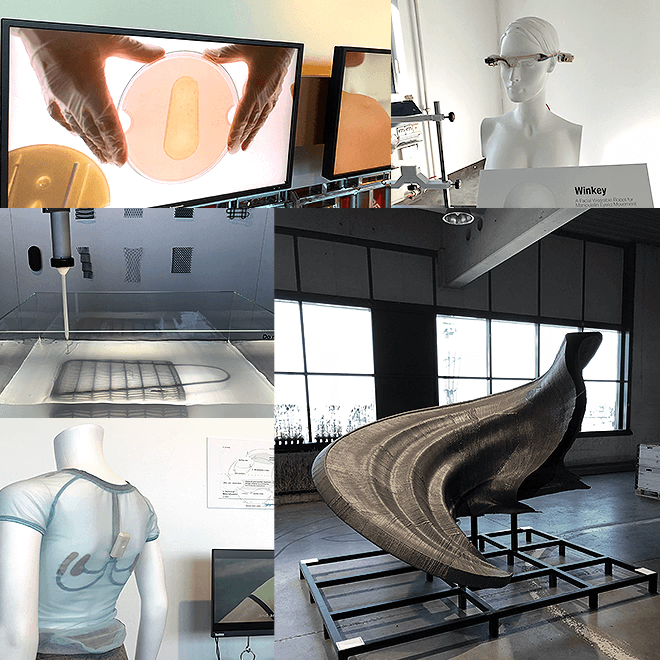
Away from Post City, a little way off the main street, there was a church where an installation was also taking place. The work itself was a stereoscopic view using anaglyphs (the kind of red and blue glasses), so it didn't feel particularly new, but I was attracted to the idea of exhibiting it inside a Gothic building. The contrast between the solemn space and the art using technology was wonderful, and I thought that manufacturing that makes good use of the space is a necessary concept for future regional branding, which overlaps with Japan.

The exterior of the church and the installation inside
As an aside, I also visited the Lentos Art Museum . This is not a media art museum, but rather a so-called "museum" that displays a wide range of art from old to modern, including Klimt's work. For the people of Linz, it is the city that has the Ars festival, which is a festival of art and technology, and many people seem to think that it is a little old-fashioned, but I felt that it was very important. I am not an expert on design or art, but after all, design and art are born in a social background and history, and as a city that is at the forefront of art, Ars, having a place to talk about art history itself gives the city depth, I think when I saw the works.

Inside the Lentos Art Museum
Open Space and Education
The Ars Electronica Center along the Danube is like a museum where you can learn about the history of 3D printers and VR, and it also has a laboratory, making it an open space that is available to all residents. When I visited, I was impressed to see a group of junior high school students there. The fact that such a technology museum is permanently established in a compact city like Linz makes art and technology feel more familiar to the residents, and I felt that it would be easy for them to penetrate the city. It seems that school teachers also use the museum, and take the technology home with them to use in their own teaching.
There are employees here called info trainers. During Ars, info trainers are stationed everywhere, and after receiving proper training, they explain the background of the technology and works to visitors. They are committed to improving the city and have an open mind towards technology and art, and they play such an important role that the organizers say, "The info trainers are the heroes of Ars Electronica."
The lady in the orange jacket below is also an info trainer. You can see how rare Linz is, where even elderly people like this can talk to visitors about art and technology.
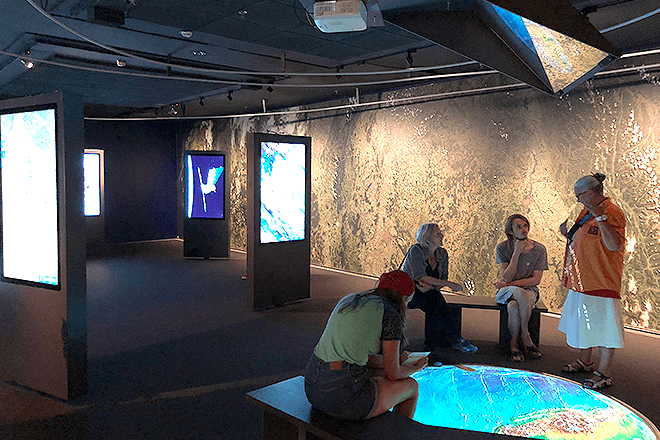
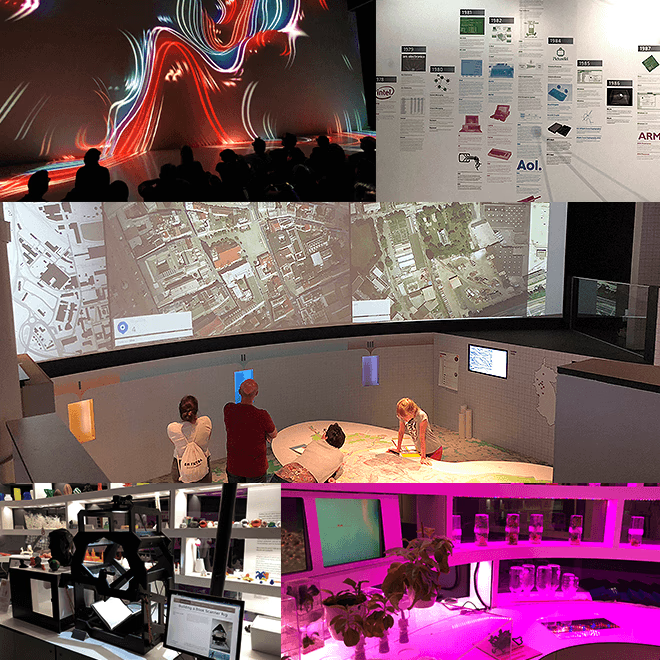
A permanent open space at the Ars Electronica Center where you can gain a variety of knowledge and apply it to your own creations.
Reexamining my work through ARS
I've been a designer for over 10 years, so I don't know much about art. I like looking at art, but there's something about it that I can't understand, and it's something that I've turned a blind eye to.
Designer encompasses many different meanings, so it's difficult to define, but at least the work I do is "creating things." The same goes for web design. Thinking about the visual flow, how to operate with fingers, what emotions to convey to users with visuals... the important thing is that there is a necessity and a reason. I thought that because it is something that people "use," it was closely linked to society. So then, what about art?
However, after visiting ARS this time, I have changed my mind. I was touched by a variety of works, including works that give me hope for the future, experimental works that offer a glimpse of possibilities, and works that are scary at first glance but make you think about society.
The person who is helping me at the company where I am currently seconded told me this: "Art is inextricably linked to society. Art influences society by asking people about the world's problems and thoughts."
I'm a designer, but I thought I should take pride in my work and the things I make and rethink what I want to ask of society. How should I approach the work in front of me? I think I was able to get some important hints on this from my visit to ARS.
This time, as part of a tour of Kamiyama Town in Tokushima Prefecture, I had the honor of accompanying Hakuhodo creative producer Washio Kazuhiko. Thanks to Washio, I was able to hear about the social background of ARS and attend interviews with local people I would not normally be able to meet, making for a very in-depth tour. I would like to take this opportunity to thank him.
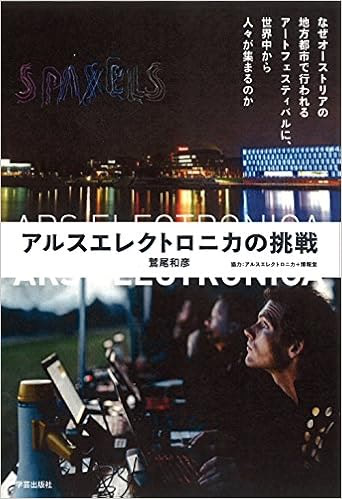
Kazuhiko Washio (author), Ars Electronica, Hakuhodo "The Challenge of Ars Electronica: Why People from All Over the World Flock to an Art Festival in a Regional City in Austria" Gakugei Publishing (April 28, 2017) (Amazon) ( Amazon )
